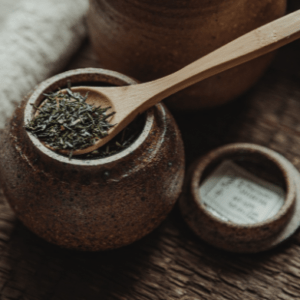 The journey into the world of loose-leaf herbal tea is a joyful one, opening up a new realm within the herb kingdom. The process of steeping tea becomes an immersive experience, leading to a refreshing cup of tea infused water. With so many options available, it can be challenging for consumers to choose the perfect blend that suits their taste and health needs. This guide aims to simplify the selection process by offering information and recommendations on how to choose the ideal loose-leaf herbal tea.
The journey into the world of loose-leaf herbal tea is a joyful one, opening up a new realm within the herb kingdom. The process of steeping tea becomes an immersive experience, leading to a refreshing cup of tea infused water. With so many options available, it can be challenging for consumers to choose the perfect blend that suits their taste and health needs. This guide aims to simplify the selection process by offering information and recommendations on how to choose the ideal loose-leaf herbal tea.
Herbal Tea 101
Unlike teas from the Camellia sinensis plant, herbal teas come from many different plants. In contrast to traditional tea, herbal teas are a result of the complex process that combines dried fruit with flowers, spices, and herbs. The flavors and health benefits in each blend are distinct, so it is important that we familiarize ourselves with the basics before deciding what exactly we want. Popular herbal teas include chamomile, peppermint, hibiscus, and rooibos, each with unique properties and flavors. There’s no one best loose-leaf herbal tea, which is why trying different varieties is helpful in finding the right one for you.
Evaluating Quality
The quality of your tea greatly impacts your overall experience. Loose-leaf herbal teas are often made with large, whole leaves, flowers, or fruit pieces, which contain more oils and flavors than crushed varieties. A good-quality tea should have a vibrant color and a strong aroma. Additionally, choosing organic teas ensures a cleaner, purer drink, free from pesticides and synthetic additives. Thoughtful tea selection enhances flavor and health benefits, making your cup of tea both enjoyable and natural. Every detail, from leaves to sourcing, matters in the final brew.
Considering Health Benefits
Herbal teas come in many flavors, such as chamomile, basil, and peppermint, each of which may offer some health benefits. One such example is chamomile, which is famous for its calming effect and works well for those needing to unwind. Peppermint tea helps with digestion and can help with headaches, hibiscus tea is high in antioxidants and good for your heart. It is rich in minerals and beneficial for both skin and bones.
Exploring Flavor Profiles
Many other teas, on the contrary, have flavor factors or elements based on personal preferences. Others might prefer the floral sweetness of chamomile, or they could like the coldness spreading throughout from peppermint. Hibiscus has a mouth-puckering, cranberry-like flavor that plays well against rooibos’ earthy and somewhat sweet taste. Some Holy Grail recipes are found by trying different blends and combinations a few times.
Brewing Techniques
The taste and strength of herbal teas vary depending on how they are brewed. Loose-leaf herbal teas often need room to expand and release their full flavor. Additionally, the ideal temperature and brewing time differ based on the herbs used. For example, delicate flowers like chamomile require cooler water and a shorter steeping time, whereas robust herbs like rooibos taste best with boiling water and longer steeping times.
Sustainability & Ethical Dimensions
Environmental awareness and ethical practices are crucial. The most eco-friendly way to enjoy herbal teas is by purchasing loose-leaf options from brands that prioritize fair trade sourcing and use sustainable packaging. Supporting such brands helps reduce environmental impact while ensuring ethical production practices.
Making Informed Purchases
When choosing loose-leaf herbal teas, it’s essential to research and read reviews. Check product descriptions, ingredient lists, and customer feedback to make informed decisions and avoid unnecessary returns. Many major retailers offer sample sizes, allowing you to try a small amount before committing to a larger purchase. This helps reduce waste and ensures you’re satisfied with your chosen blend, making the tea selection process more effective and enjoyable.
Conclusion
Choosing the best loose-leaf herbal tea involves understanding the basics, evaluating quality, considering health benefits, exploring flavor profiles, and perfecting brewing techniques. Additionally, considering sustainability and ethical practices enriches the overall tea experience. With these tips in mind, tea enthusiasts can confidently embark on their journey, discovering the perfect herbal blend that suits their taste and wellness needs.

